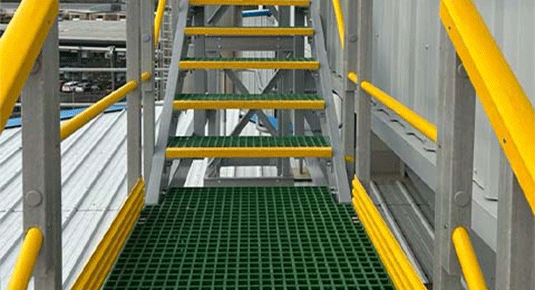loading...
- No. 9, Xingyuan South Street, Dongwaihuan Road, Zaoqiang County, Hengshui, Hebei, China
- admin@zjcomposites.com
- +86 15097380338
- Welcome to visit our website!
frp sheet piling
The Advantages of FRP Sheet Piling in Modern Construction
In the ever-evolving world of construction, the quest for innovative materials that offer durability, efficiency, and sustainability has led to the increasing utilization of Fiber-Reinforced Polymer (FRP) sheet piling. This advanced material is rapidly gaining popularity due to its numerous benefits, making it an ideal choice for various applications in civil engineering, particularly in waterfront and underground projects.
The Advantages of FRP Sheet Piling in Modern Construction
One of the most significant advantages of FRP sheet piling is its outstanding resistance to corrosion and chemical degradation. In maritime environments, where materials are often exposed to saline conditions, steel sheet piling can suffer from rust and weakening over time. In contrast, FRP is inherently resistant to such elements, ensuring a long lifespan and lower maintenance costs. This durability not only enhances the lifetime of structures but also helps in preserving the natural environment by minimizing the need for frequent repairs and replacements.
frp sheet piling

Moreover, FRP sheet piling is environmentally friendly. The production and installation processes of FRP materials consume less energy compared to traditional piling systems. Additionally, since FRP does not leach harmful chemicals into the surrounding soil or water, it contributes to healthier ecosystems, making it a preferred option for environmentally conscious projects.
The versatility of FRP sheet piling allows it to be used in various applications, including retaining walls, flood protection systems, and tunnels. Its adaptability can be seen in its ability to be manufactured in different shapes and sizes, catering to specific project requirements. Engineers and architects can leverage FRP's flexibility to create tailored solutions that meet both structural and aesthetic needs.
In conclusion, FRP sheet piling represents a significant advancement in the field of construction materials. Its lightweight nature, exceptional resistance to corrosion, and environmental benefits make it a compelling option for modern civil engineering projects. As more industries recognize the advantages of using FRP, we can anticipate a shift toward more sustainable and durable building practices, paving the way for a more resilient infrastructure in the future.
-
GRP Structures: The Future of Lightweight, High-Performance EngineeringNewsJun.20,2025
-
FRP Water Tank: High-Performance Storage for Corrosive and Clean Water SystemsNewsJun.20,2025
-
FRP Square Tube: The New Industry Standard for Chemical and Structural ApplicationsNewsJun.20,2025
-
FRP Pultruded Profiles: The Ultimate Choice for Lightweight Structural StrengthNewsJun.20,2025
-
FRP Handrails: The Safer, Smarter, and Stronger Choice for Modern InfrastructureNewsJun.20,2025
-
FRP Grating: The Smart Solution for Durable, Lightweight Industrial FlooringNewsJun.20,2025
-
Why Choose a Galvanized Water Tank for Your Storage NeedsNewsMay.21,2025
